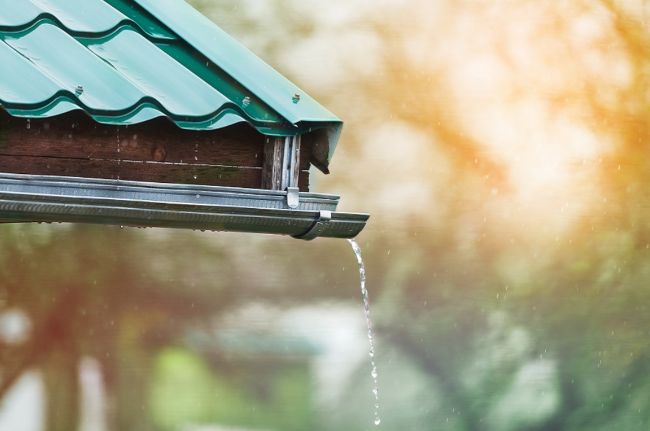Harvesting Rainwater: How Your Roof Can Supercharge Your Garden’s Hydration (and Save You Money)

There’s something satisfying about using what’s already there. And when it comes to keeping your garden green without watching your water bill shoot up, rainwater is a bit of a secret weapon.
If you’ve got a roof, you’ve already got a free water collection system. Most people don’t think about it that way—roofs are for keeping things out, not bringing anything in. But with just a few small tweaks, your roof can help your garden thrive, even through dry spells.
Let’s break it down.
Where it all starts: your roof
Every square metre of roof collects around 1 litre of water per millimetre of rainfall. That means even a modest UK roof, say 60m², can collect thousands of litres each year. And in places like Hertfordshire, where showers can turn up almost any week, that’s a solid source of fresh, chemical-free water just waiting to be used.
It flows off your tiles, down the gutters, and—usually—into a drain. But with a water butt or rainwater harvesting system, you can divert that water straight into storage.
It’s cleaner than you might think, too. Most of the debris gets caught in filters or settles. And for plants, it’s perfect—no chlorine, no treatment, just straight-from-the-sky goodness.
What you’ll need to get started
You don’t need a high-tech system to start harvesting rainwater. You can do a simple setup in an afternoon, with parts from any decent garden centre or hardware shop.
Here’s the basics:
- Downpipe diverter – This redirects water from your gutter into your storage container.
- Water butt or tank – Size depends on your space and needs. Some fit snugly against a wall.
- Basic filter or screen – Keeps out leaves and rubbish.
- Overflow pipe – When it’s full, the excess water still needs to drain safely away.
Some people add a small tap or hose connector to the bottom of the tank—makes it easier to fill a watering can or connect to drip irrigation.
A few tips from people who’ve done it
- Elevate your water butt. A raised platform gives you better pressure if you’re using a hose.
- Keep it covered. Stops mosquitoes and algae from taking over.
- Check your gutters. Clean them out at least twice a year—especially after autumn leaves.
- Don’t use it on edibles if unsure. If your roof has old lead flashing or moss treatments, avoid using that water on vegetables or herbs unless it’s filtered properly.
Is it actually worth it?
Yes—especially in summer. A typical garden hose can use around 1,000 litres of water per hour. And that adds up, especially if you’re on a water meter.
Harvested rainwater doesn’t just cut costs; it gives you independence from hosepipe bans and mains supply hiccups. Plus, it’s better for your plants. Tap water’s fine, but it’s often too alkaline and contains chemicals that aren’t ideal for sensitive soil.
Gardeners say you can see the difference. Leaves look lusher. Soil holds moisture longer. And there’s something a bit more satisfying about seeing your plants thrive on nothing but sky water and sunlight.
What about long-term systems?
If you’re up for a bigger project, you can go beyond water butts. There are full-scale rainwater harvesting systems with underground tanks, smart filters, and pumps that can run irrigation across the whole garden. Some even connect to your toilet or washing machine indoors.
Those setups need a bit more investment and planning, but they can be great if you’ve got a big plot or want to futureproof your home.
For many, though, the simple route works just fine.
Roofing does the heavy lifting
Here’s the bit people often miss: the roof is doing all the work. Without a proper roof setup—tight tiles, clean gutters, secure flashing—you’re not going to get a steady, clean supply.
If your roof’s in poor shape, you could end up harvesting more moss and muck than water. So before setting anything up, have a quick check. Or better yet, get a roofing company to take a look—especially if you’ve noticed leaks or sagging gutters.
Many roofing services offer quick inspections and can spot little issues before they become expensive ones. A well-maintained roof not only helps your home—it’s what makes rain harvesting possible in the first place.
The small change that adds up
In the end, harvesting rainwater isn’t just a money-saver. It’s about using what you’ve already got to make life easier. Less waste. Less stress when summer comes around. And better results in your garden—without relying on the tap.
So if you’ve got a roof, a bit of guttering, and a few spare hours, you’ve already got everything you need to get started.
And if you’re ever unsure whether your setup’s working properly—or want to make sure your gutters are up to the job—it might be worth chatting with AM Roofing, a roofing company covering North London and Hertfordshire. A few quick fixes now can make a world of difference when the next rainfall comes.
Let your roof work both ways: keep the weather out and help the garden grow.


